Ecology of Asiatic black bears
■Physical Characteristics
A medium-sized bear with black fur and round, relatively large ears. It has white fur on its chest in a V-shaped pattern resembling a crescent moon. This crescent moon gives them their nickname "moon bear". The shape of their crescent moon differs from one individual to another, making it possible to identify individual bears by the shape and size of their marking.
They also have short, strong claws adapted to life in the trees. Their front leg muscles are well-developed compared to those of their hind legs, making them excellent tree climbers.
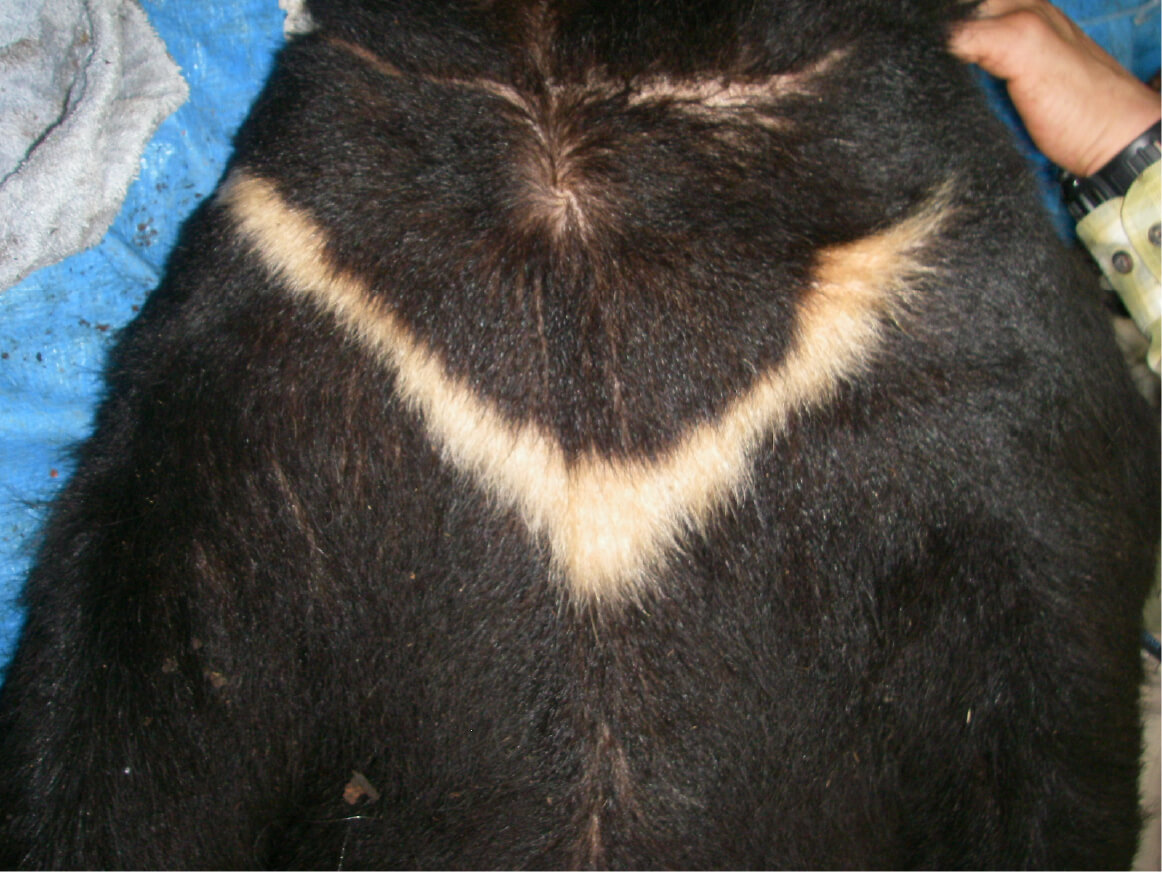
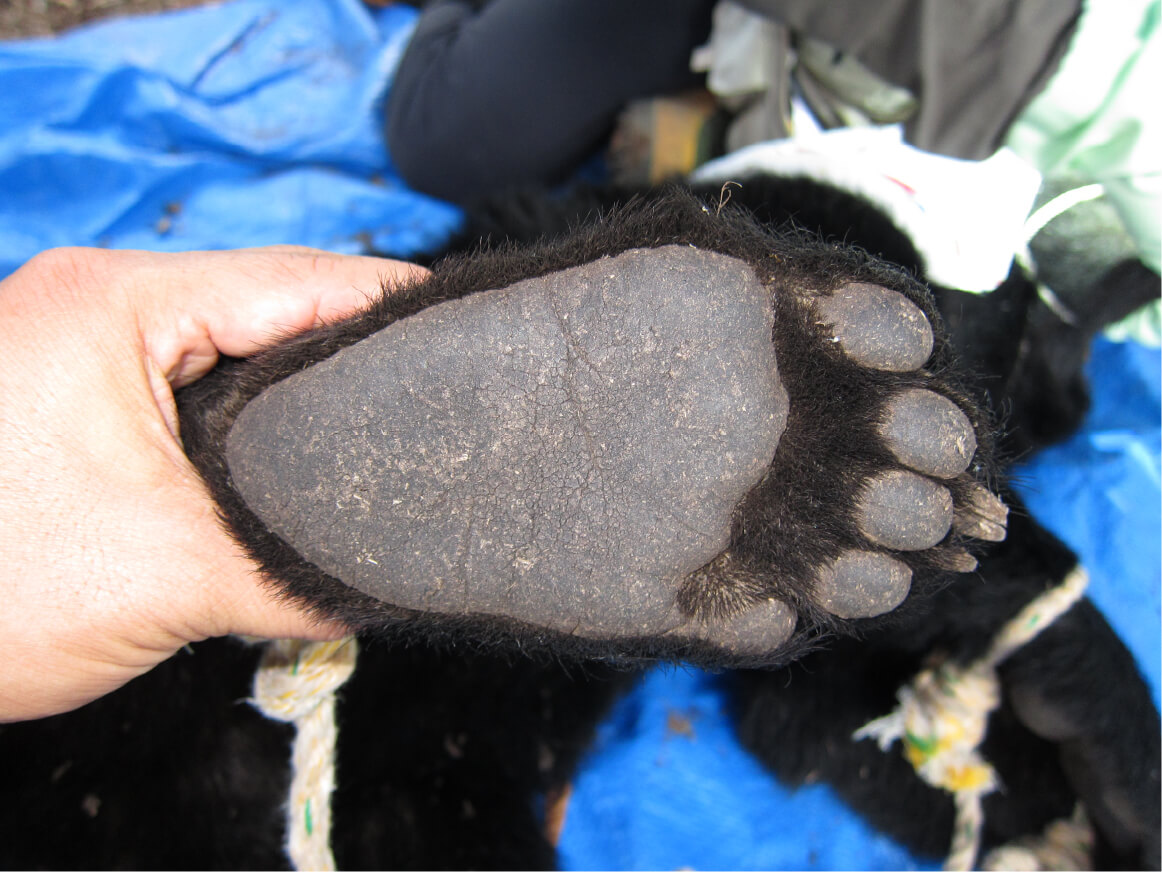
■Size (based on the measurements of individuals confirmed in Shikoku)
Full body (head to tail) length: Males average 140 cm, females average 120 cm
Body height 50~60 cm
Weight Male averages about 60 kg, female averages about 45 kg
However, there is a great deal of variation depending on the individual and the season, and in the past, a male weighing nearly 100 kg (captured in July) has been confirmed.
Asiatic black bears show sexual dimorphism, in which males are larger than females.

■A year in the life of an Asiatic black bear
Diet (Figure)
The Asiatic black bear is an omnivore that feeds primarily on plants. Their diet is flexible depending on season and habitat conditions. In spring, they feed on shoots, young leaves, and flowers of various plants; in summer, fruits of the cherry and strawberry families and social insects such as bees and ants; and in autumn, calorie high beech and oak nuts, mizuki berries and mountain grapes, an effort to store energy for a long winter hibernation. Although not skilled hunters, they are known to scavenge carcasses of deer and other animals on an opportunistic basis.
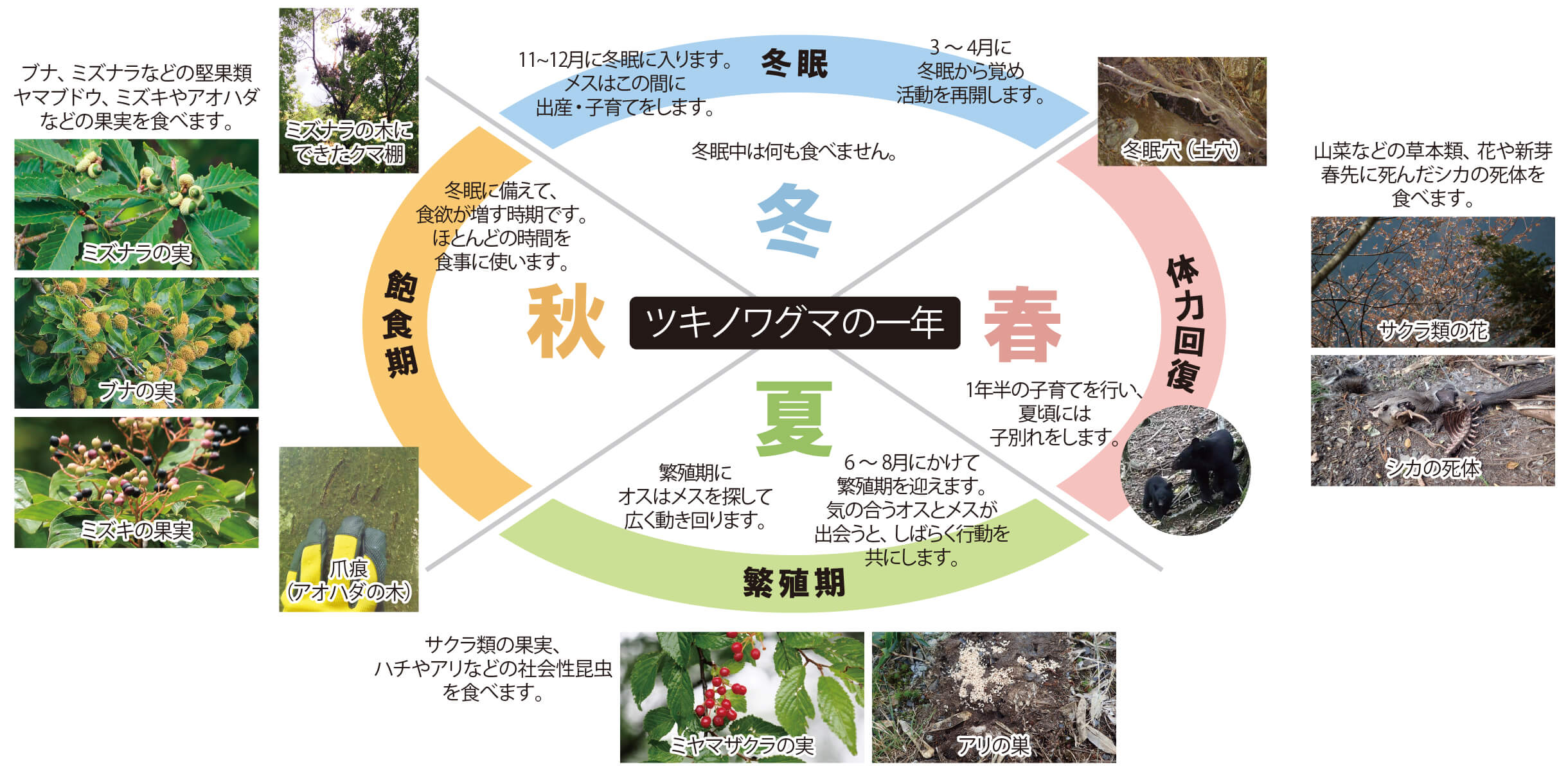
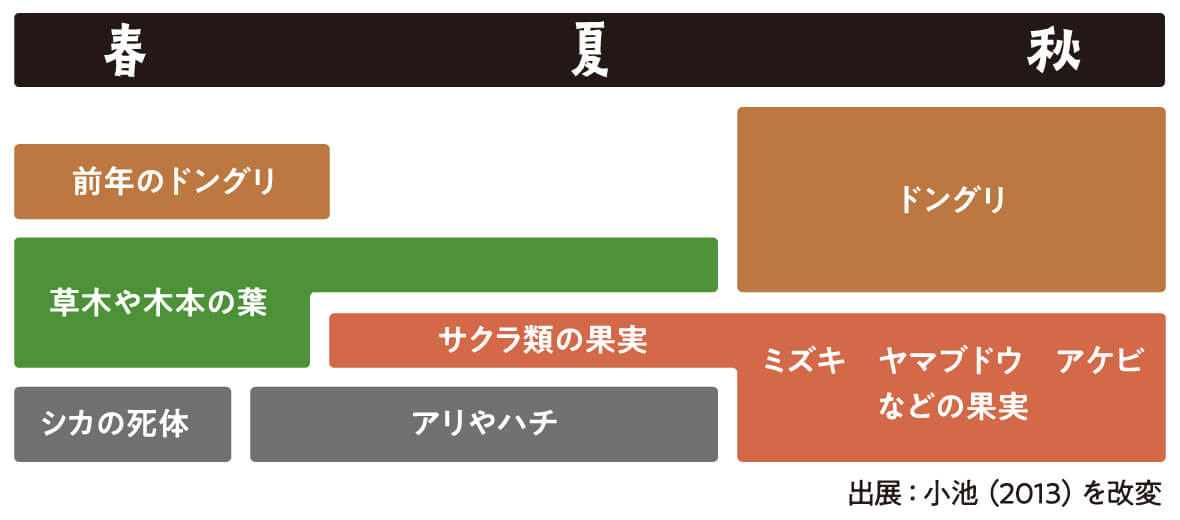
-
■Lifespan
In the wild, individuals rarely exceed 20 years of age.
In the wild in Shikoku, the oldest known male is estimated at 24 years old (as of 2021).
In captivity in zoos and other facilities with good nutritional conditions, individuals may exceed 30 years of age.
-
■Breeding and Fertility
Both males and females reach reproductive maturity at around 4 years of age. Mating season occurs between June and August. After finding a mate, pairs stay together for a short time only before going their separate ways. Females give birth to one or two young every few years. Young females often fail to raise their young, and the mortality rate of cubs is high. Unlike deer and wild boar, the rate of population increase is slow.
-
■Range
Males live in an area of 100 to 200㎢ and females in an area of 50 to 100㎢. They do not use this large area evenly, but have a number of areas within this range where their use is concentrated.
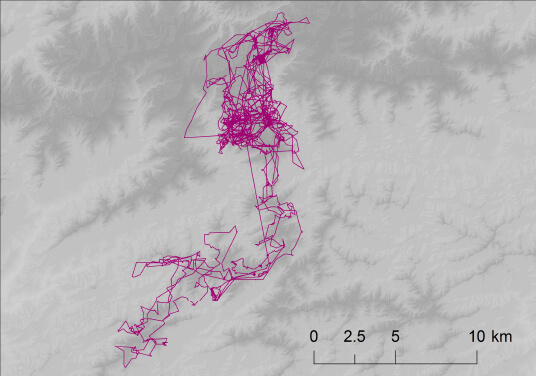
-
■Hibernation
From November and December, food begins to decline in the forests, and Asiatic black bears enter hibernation, finding a den in hollow trees or rock or earthen caves. They awaken from hibernation between March and April of the following year.
Females give birth during the hibernation period and raise their young in the winter den without eating or drinking.
